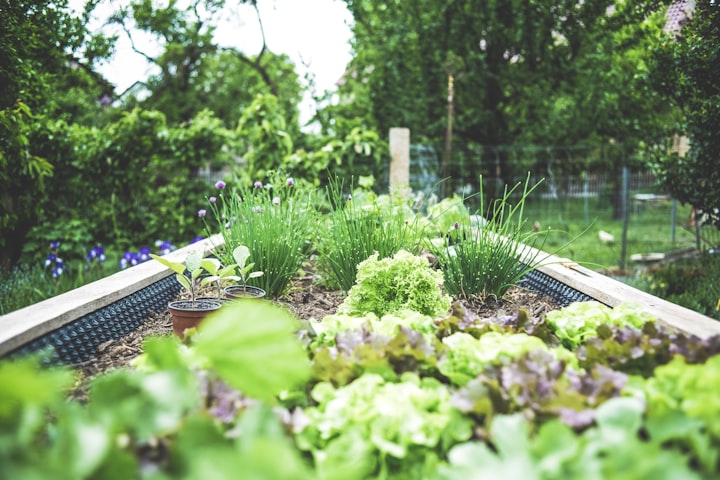Can a Greenhouse Be Used Throughout the Winter?
How to Care For Plants In an Unheated Greenhouse

If you’re into sustainable gardening, and you’re fortunate enough to have your own greenhouse, It’s guaranteed that you will be the envy of your gardening peers. You will be able to have fresh, home-grown vegetables all year round, and they won’t.
This is because a greenhouse provides a continuously controlled environment without regard to season, so you can keep your crops growing all year long. This means that when winter hits, you will still have a steady supply of organically grown vegetables to consume at your leisure.
How To Winterize Your Greenhouse
1. Winterize The Right Way
For most greenhouse owners, the “winterizing” process is almost a habit rather than an enforced routine. It doesn’t matter whether you intend to keep a winter garden growing or not. Basically, this is an opportunity to do a thorough cleaning of your greenhouse.
To get rid of the debris left over from the late summer and fall harvest time, and to get your greenhouse in prime condition before the snow comes.
That means meticulously clearing out any organic materials that are still in your greenhouse. After all, you don’t want to attract rats or mice to your greenhouse by leaving plant cuttings, etc. laying around for them to either eat or use as bedding. Rodents will pretty much settle for anything when it comes to food, especially in the winter when their normal outdoor food sources are eliminated.
Furthermore, it’s an excellent chance to give all of the moving parts of your greenhouse a complete inspection. You can’t neglect the care of the physical parts of your greenhouse just because you are concentrating so hard on taking proper care of your vegetable plants.
Take note of any maintenance that’s needed and determine what needs to be replaced or repaired prior to the first snowfall. This will guarantee that you will have a healthy and safe greenhouse environment, even when the temperature eventually falls below zero. Don’t forget too that the cold weather causes its own damage to buildings, and can increase what damage has already been done.
2. Select The Appropriate Crops
Growing through the winter can be a challenge, even when you grow the crops you had such great success with all year long. This is the reason why it’s crucial when planning your winter growing that you opt for crops you are sure will be able to withstand the extreme atmosphere of winter.
Of course your greenhouse will diminish many of the most harmful aspects of the winter climate, but growers located in northern and extremely cold areas should still concentrate on planting hardy root vegetables and leafy greens — such as spinach, carrots, and others — to be certain they will have success during the winter growing season.
3. Keep Well Lighten
When it comes to lighting in your greenhouse, you have to remember that nothing edible will grow in the dark. This is the reason so many crops begin to look sickly and unhealthy just at the time the sunlight begins to slink backward. It’s the way of nature preparing for the winter months, but long days filled with brilliant sunshine begin to give way to later mornings that are much colder, and longer, darker nights.
If you want to combat this problem, the first thing you should do is try growing plants that are more cold tolerant. They will be more easily sustainable through the dark times. However, you should also invest in artificial lighting, because without this support, your plants are not going to survive through the winter.
Your greenhouse must remain well lighten even in the winter months, in fact, especially during the winter months. There is so much less natural light available to your plants that they must depend on artificial lighting to help them. So you will need to purchase grow lights if you want your vegetables to grow and develop as they should.
Ultraviolet lights are always a good choice.
4. Control Heat And Humidity
The colder the weather is outside of your greenhouse, the greater will be the need for heat inside. It doesn’t matter if you’re dealing with mild southern winters, or the harsh, freezing cold of a northern winter, the heat from the sun will just not be strong enough to keep your crops alive until spring.
This is where an effective supplemental heating system that is the correct size for your greenhouse will come in handy. It could be the difference between life and death for the vegetables you are trying to grow.
Furthermore, it’s not only the plants that require heat to continue growing and thriving through the winter. You need to keep the greenhouse sufficiently warm to avoid the spread of disease. There are certain diseases that enjoy having a warm place to hide out when the great outdoors becomes unfriendly, and your nice, cozy greenhouse with its warmth and humidity will be the ideal place for them.
So you need to control your humidity as well as your heat. If you want your plants to survive unscathed, it’s crucial to balance your humidity with your heat. This can be done with proper ventilation or an efficient dehumidifying system so that diseases won’t be able to run rampant and hamper the growth and health of your plants
Heating The Greenhouse In Winter
The most serious challenge to keeping temperatures steady in a greenhouse is the winter months. Here are some suggestions for you:
. Shade screens and vented windows — You need these in order to permit a breeze to get through and help prevent the intense sunlight from heating any area of your greenhouse too much. This is because sunlight penetrating a greenhouse is magnified and could end up burning your plants. Plus, overheating is never good for plants and will cause them to wilt and develop yellow leaves.
. Artificial means — Since greenhouses are not well insulated, they can lose trapped heat very swiftly once the outside temperatures start to drop. There are very many different solutions to the problem of how to heat your greenhouse artificially. One of them is bound to suit your needs.
. Heaters — Electric space heaters, portable gas and electric heaters, wood heaters, and other options, all of these are worthwhile choices to help bring your greenhouse to a temperature that will be comfortable for your vegetable plants.
. Thermostat — You might even want to think about installing a thermostat for certain areas so that you can monitor your heating easily. You can have several put in in different problem areas so that you can keep an eye on them.
5. How To Increase Heat In An Unheated Winter Greenhouse
If you are particularly lucky, your greenhouse may be able to stay mildly warm inside during the winter without your being forced to resort to the use of artificial means of heating, just due to the sun alone.
But once the sun sets, the temperature is going to drop fast. However, there are some things you can do to improve heat retention and to insulate your vegetable plants from the cold.
. Insulation — To provide insulation, use deep mulching or row-cover fabrics.
. Root Crops — To insulate root crops such as carrots and beets, apply a deep straw or leaf mulch by spreading it over the bed in the late autumn before the greenhouse soil has had time to freeze.
. Heat Sink — Yet another clever way to slow heat loss in a winter greenhouse, is to create a heat sink. Like a few barrels filled with water. The water soaks up the heat during the day and then releases it slowly at night, thus slowing down the cooling process.
. Compost Pile — If your greenhouse is on the large side, you can also put a compost pile inside to make heat.
6. Do Your Harvesting Efficiently
It’s an easy and common mistake that first-time winter growers are prone to make. That is treating the winter harvest the same way you would the spring or summer harvests. It is wrong to think that one harvest is just like another and it doesn’t make a difference what time of year it is.
The fact of the matter is, that while your grow periods at other times of the year might add up to one huge harvest featuring the same crop spanning a short time, winter harvests do not work that way. A winter harvest needs to be spread out to cover the whole season.
This amounts to scheduling harvesting only when you need to do so, and letting the plants that can regrow have the time to do so. It just takes a little careful planning and you should be fine.
A lot of winter growers will plan out their vegetable beds in rows which can be harvested one by one, letting the rows that are harvested first have the time to regrow while the other rows are being harvested. In this manner, the cycle of fresh vegetables that are being harvested — though a smaller amount — will last through the winter until spring arrives.
In this way, you can supply your family with fresh vegetables throughout the winter without worrying about running short.
7. What To Grow In A Winter Greenhouse
There are a great many crops that can be grown successfully in a winter greenhouse. The vegetables you select for growing depend on the climate you live in and what you and your family enjoy eating.
Salad greens usually do well, such as winter lettuce, Asian greens, kale, endive, and arugula. These are just a few easy suggestions. There are plenty more vegetables you can grow.
8. How To Take Care of Vegetables In A Winter Greenhouse
There are 5 essential chores to keep foremost in your mind when you are looking after a winter greenhouse garden.
. Watering — The fact of the matter is that during the coldest months of December—February, your vegetable plants will not be needing a great deal of water. You can use a hose to water them about once a week, or you can use a watering can filled from a rain barrel placed near the greenhouse, or one that is used for the purpose of catching water that falls from the roof of the greenhouse.
. Fertilizing — When taking care of the needs of your winter greenhouse vegetable beds, soil health is one of the top priorities. You should make a habit of regularly working in compost, chopped leaves, and other nutritious additions to the soil.
You can use organic fertilizer too. Both granular and liquid fertilizer are excellent to support the growth of healthy plants and to guarantee a wonderful winter harvest. It’s a good idea to add slow-release granular fertilizer at planting time, and liquid fertilizer can be used on a monthly basis.





Comments
There are no comments for this story
Be the first to respond and start the conversation.